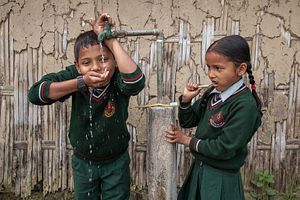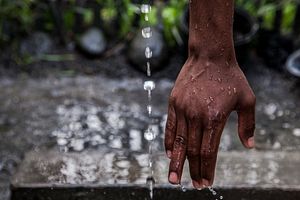Despite recent achievements in bringing water to a growing percentage of the population, Nepal continues to suffer from a water crisis, with many people still unable to access to clean water sources. For communities in the remote mountains and hills, fetching water can mean hours of walking for just one pot. In the Terai plains, where water sources are easier to access, the water may not be safe to drink or cook with, because of contamination by industrial and agricultural chemicals. And in Nepal’s large cities, including Kathmandu, high rates of urbanization are over-saturating the existing water supply systems.
Although access to water does depend on geography, those groups that have been historically marginalized in Nepal are also those with the least access: lower castes such as Dalits, indigenous communities, and women. In the country’s remote areas, Dalits and indigenous communities tend to live in more isolated areas, often above water sources, where fetching water is even more taxing on the community’s resources. And as fetching water is often considered a woman’s job, the lack of access to water has a disproportionate impact on women and girls.
Throughout Nepal, projects are being implemented to ensure equitable access to water, with notable achievements. In 1990, only 46 percent of the population had access to drinking water; today, 84 percent does. Access to water can have a transformative impact on communities, leaving more time for growing vegetables and other livelihood opportunities, attending school and studying, and taking care of children. It also means that communities can maintain better sanitation practices, thereby reducing illnesses such as diarrhea, which particularly impact children. However, with as many as 75 percent of Nepal’s water supply systems in need of repair, experts agree that more must be done to address this crisis.









































